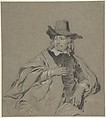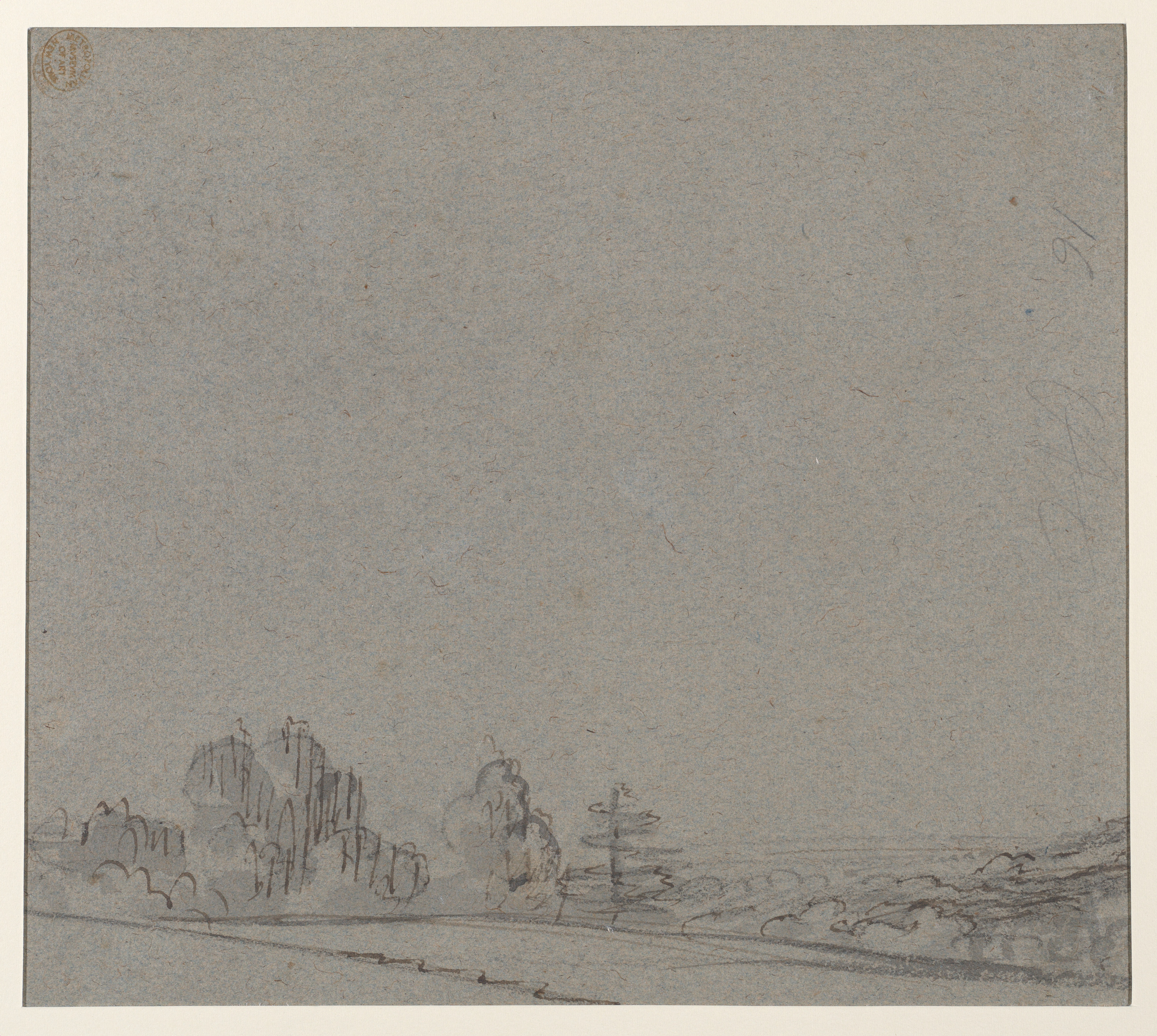Portrait of a Man
Jacob Backer Dutch
Not on view
This sophisticated looking man is posing for a portrait. He leans back slightly, with his left elbow resting on a table and his right hand brought to his chest in an elegant, stately manner. His likeness was drawn in black, white and some red chalk by the Dutch artist Jacob Backer, a portraitist as well as a painter of historical subject matter. The drawing is an example of Backer’s mature style, in which the artist had adopted the manner of portraiture, popularized by his fellow Amsterdammer Bartholomeus van der Helst (1613–1670) in the 1640s. It is characterized by a certain degree of flamboyancy in the display of wealth and a bourgeois demeanor, as opposed to the more restrained and sober likenesses painted in previous decades.
The sheet is a study, presumably used in preparation of one of Backer’s large group portraits. The sitter has long been thought to represent one of the ‘regenten’ or governors of the so-called Huiszittenhuis, a municipal charity organizations in Amsterdam. This group of seven men was majestically portrayed in a large scale painting by Backer around 1650.[1] Carlos van Hasselt identified the man in our portrait as Isaac Commelin, seen to the far left of the painting.[2] Werner Sumowski and Gerbrand Korevaar thought him to represent Rombout Kemp or Lucas Pietersz. Conijn, both seated to the far right.[3] In the 2008 exhibition catalogue on Backer, however, Peter van den Brink argued that both the pose and direction of this Portrait of a Man differ to such extent with the figures depicted in the painting, that a relationship between the two was deemed unlikely.[4]
Although indeed there is no one to one resemblance with any of the governors of the Huiszittenhuis, nevertheless some striking similarities in poses between the sitters identified above cannot be denied. As the drawing concerns a loose preparatory drawing, made in the early stages of the preparation of a composition, the possibility exists that Backer recorded his sitters in several poses, only to choose a final one when his definitive composition had come together.[5]
In the process of preparation of a large scale group portrait, the artist would make preliminary sketches like this Portrait of a Man to record the pose of every individual sitter, which he could then use in constructing the final group composition. Subsequently, a more finished likeness of the individual sitters would be made and used as a point of reference during the painting process.[6]
Like many of his contemporaries, Backer used blue paper for his figure studies, which allowed the artist to work with the tone of the background and the various colors of chalk to modulate form, thus obtaining better sense of volumes and the effects of light which provided an excellent visual aid when later transforming the motif into a painting. Probably due to the exposure to light, the paper in this instance has discolored into a grayish-brown.
On its reverse, this sheet shows a sketch of a landscape in loosely applied black chalk, pen and brown ink and gray wash. It is the only known landscape by Backer.
SvA, January 2020
[1] The painting is now in the Rijksmuseum (on long term loan by the City of Amsterdam, inv. no. SK-C-422). The Huiszittenhuis was one of the many charity organizations of Amsterdam, run by the city, which provided food, fuel and clothes to the needy.
[2] C. van Hasselt, Rembrandt and His Century. Dutch Drawings of the Seventeenth Century from the Collection of Frits Lugt, exh. cat. Paris (Institut Néerlandais)/New York (Pierpont Morgan Library), 1977-78, p. 6-7.
[3] G. Korevaar, ‘De regenten van het Nieuwe Zijds Huiszittenhuis door Jacob Adriaensz Backer’, Amstelodamum Themanummer: Oude Meesters van de Stad Amsterdam, vol. 95, no. 3/4 (2008), p. 41.
[4] J. van der Veen and P. van den Brink, Jacob Backer (1608/09-1651), exh. cat. Amsterdam (Museum Het Rembrandthuis)/Aachen (Suermondt-Ludwig-Museum), 2008, pp. 73-74.
[5] A sketch in brush and gray ink records an early concept for the composition (Munich, Staatliche Graphische Sammlungen, inv. no. 1949:46). A more finished drawing in black chalk, held in the Rijksmuseum (RP-T-1896-A-3144), shows the definitive design.
[6] Four other figure studies on blue paper are related to Governors of the Huiszittenhuis. The first is kept in the Municipal Archives of Amsterdam and has been identified as a portrait of Rombout Kemp or Cornelis Metsue, the second, thought to represent Isaac Commelin, is in Berlin (Staatliche Museen, Kupferstichkabinett. A third portrait, possibly of Lucas Pietersz. Conijn, is in the Albertina, Vienna (inv. no. 10212). The last sheet, a portrait of either Johan Steur or Claes van Lith, is kept in the Fondation Custodia, in Paris. Cf. G. Korevaar, ‘De regenten van het Nieuwe Zijds Huiszittenhuis door Jacob Adriaensz Backer’, Amstelodamum Themanummer: Oude Meesters van de Stad Amsterdam, vol. 95, no. 3/4 (2008), pp. 39-43.
Due to rights restrictions, this image cannot be enlarged, viewed at full screen, or downloaded.
This artwork is meant to be viewed from right to left. Scroll left to view more.





